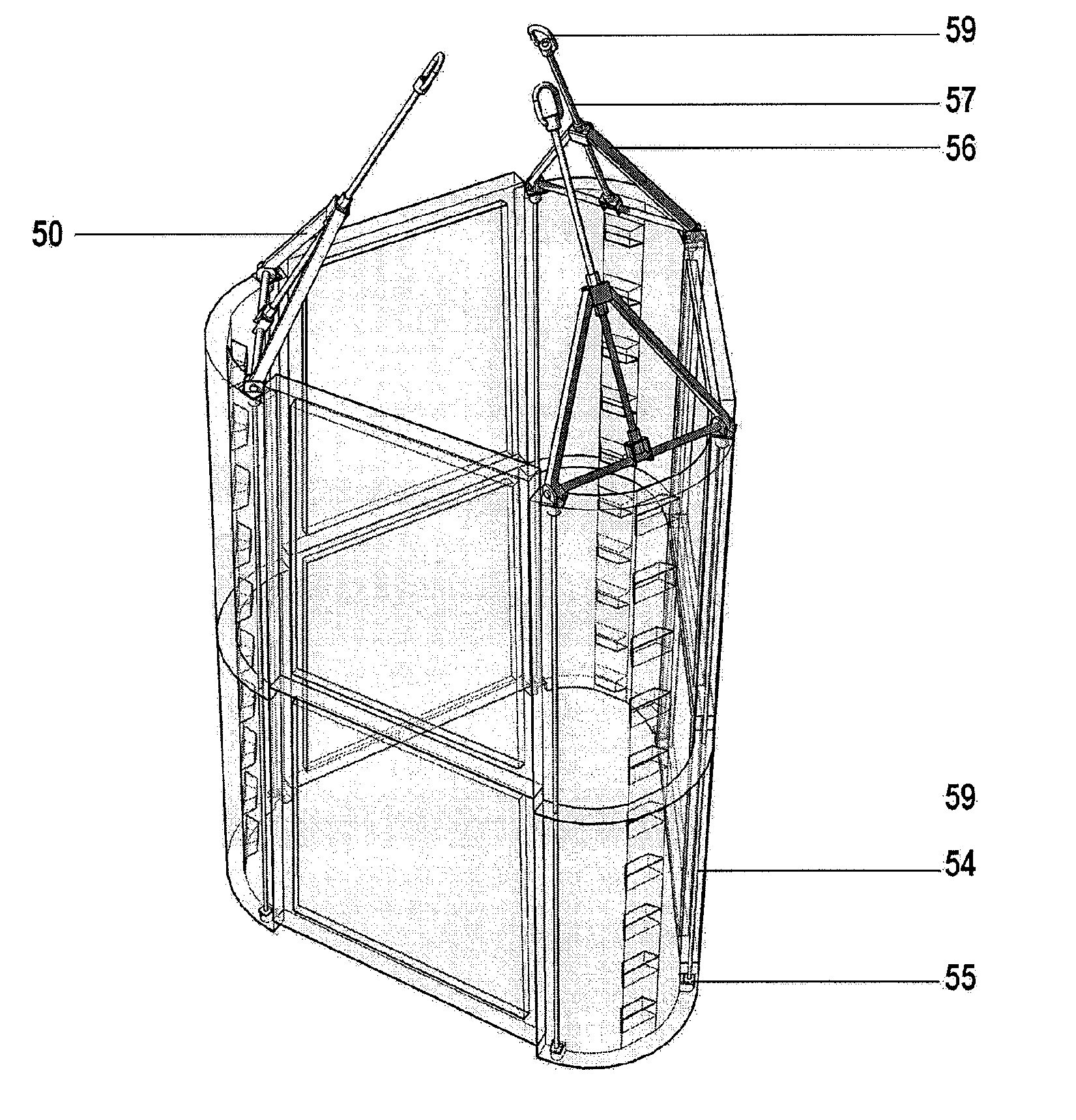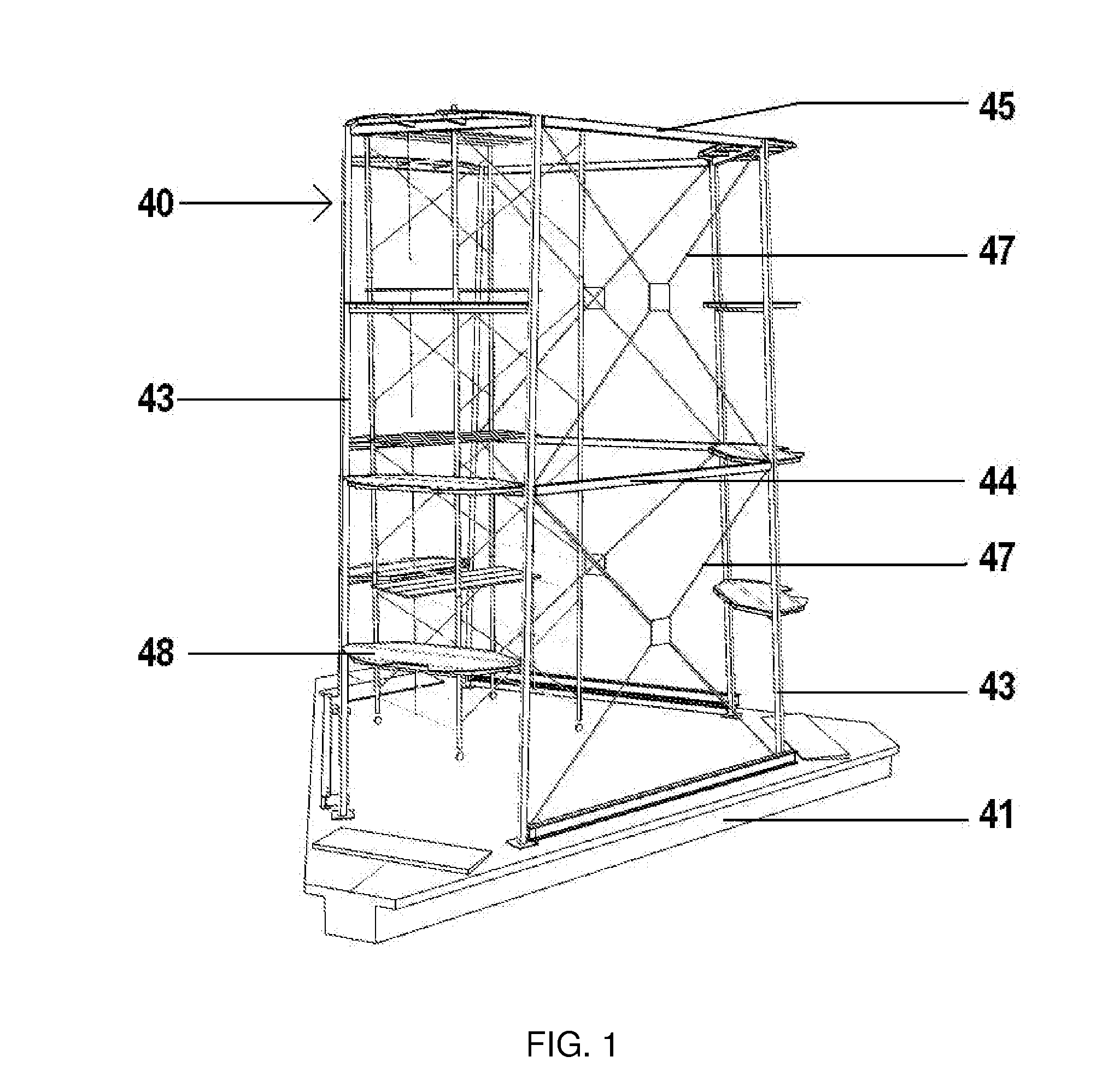Method for mounting in sections an annular tower for wind power generator, heliostatic power generator or chimney composed from three concrete segments or more
a technology of prestressed concrete and wind power generators, applied in the direction of building components, structural elements, building scaffolds, etc., can solve the problems of difficult handling, large and heavy sections, and limited heigh
- Summary
- Abstract
- Description
- Claims
- Application Information
AI Technical Summary
Benefits of technology
Problems solved by technology
Method used
Image
Examples
Embodiment Construction
[0045]The tower, chimney or pole of the present invention is made of pre-stressed concrete, hereinafter only referred as tower, and it is tapered. The tower is an elongated structure having a cross-section decreasing as a function of the tower height. Accordingly, the diameter of the base is bigger than the diameter on the top. The tower is annular, that means that the tower comprises an external and internal surfaces and an inner gap. The tower can assume any geometry.
[0046]The present invention overcome every drawback of the prior art previously described.
[0047]The height of the tower is variable, and in the case of towers for wind or heliostatic generators, such height depends on the capacity of the nascelle or wind generator or solar receiver to be mounted on.
[0048]In an embodiment of the invention, the tower includes an elongated tapered structure formed of concrete legs and concrete joining walls. The concrete legs are formed from prefabricated concrete curved segments (herein...
PUM
 Login to View More
Login to View More Abstract
Description
Claims
Application Information
 Login to View More
Login to View More - R&D
- Intellectual Property
- Life Sciences
- Materials
- Tech Scout
- Unparalleled Data Quality
- Higher Quality Content
- 60% Fewer Hallucinations
Browse by: Latest US Patents, China's latest patents, Technical Efficacy Thesaurus, Application Domain, Technology Topic, Popular Technical Reports.
© 2025 PatSnap. All rights reserved.Legal|Privacy policy|Modern Slavery Act Transparency Statement|Sitemap|About US| Contact US: help@patsnap.com



